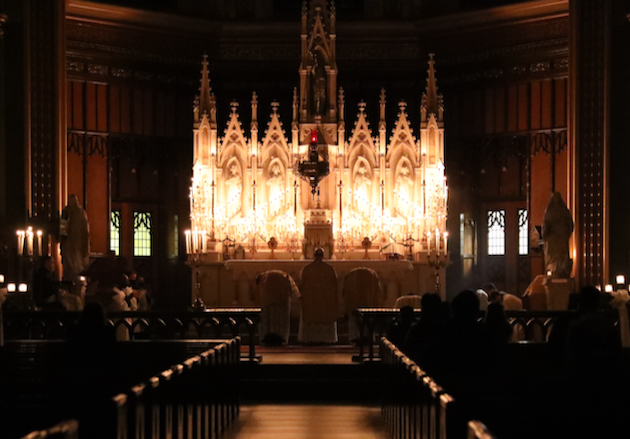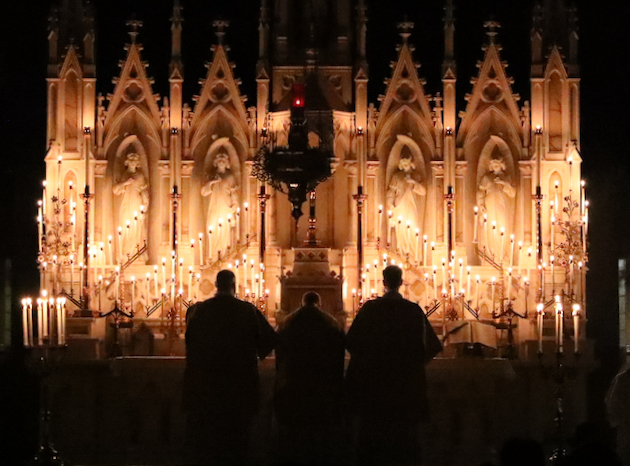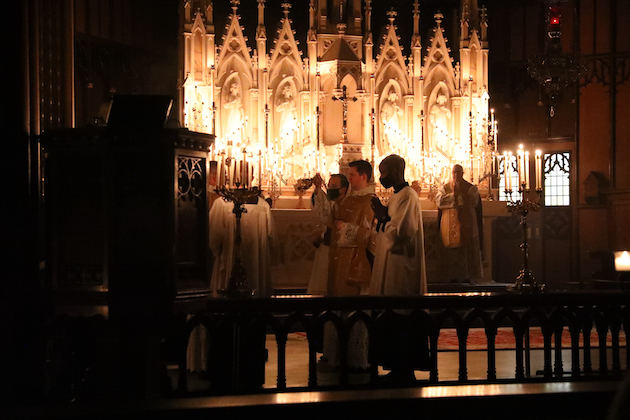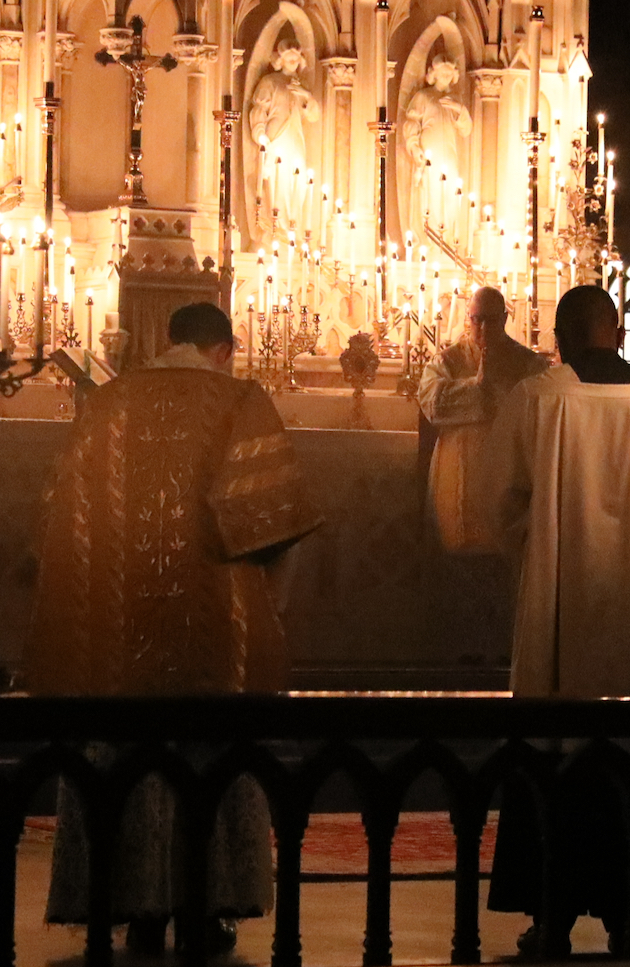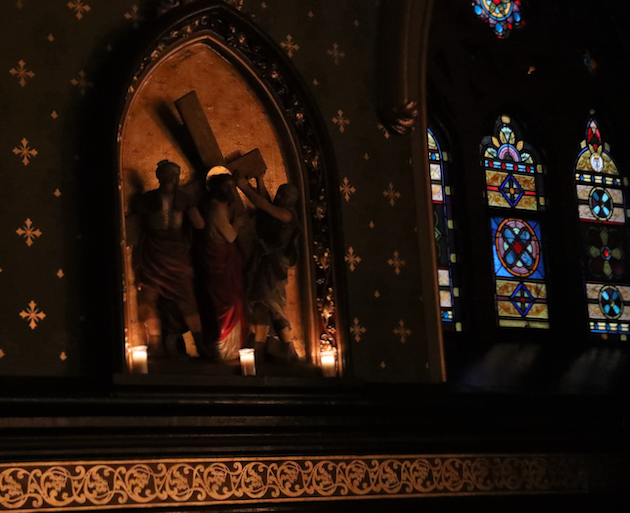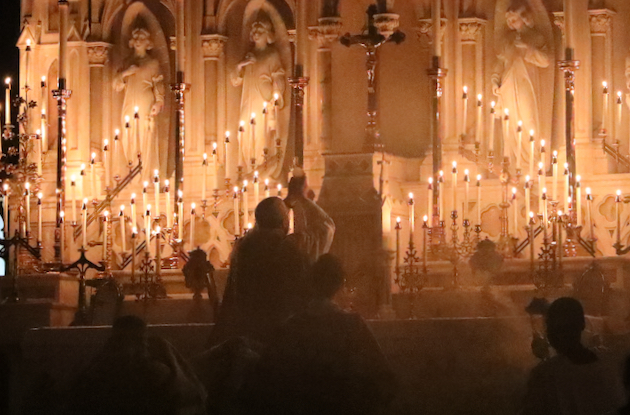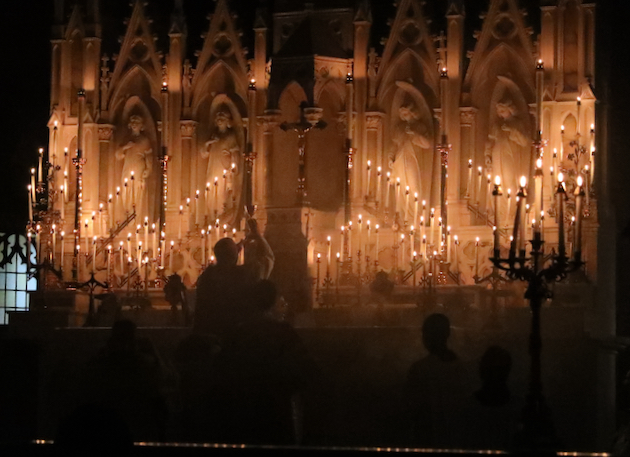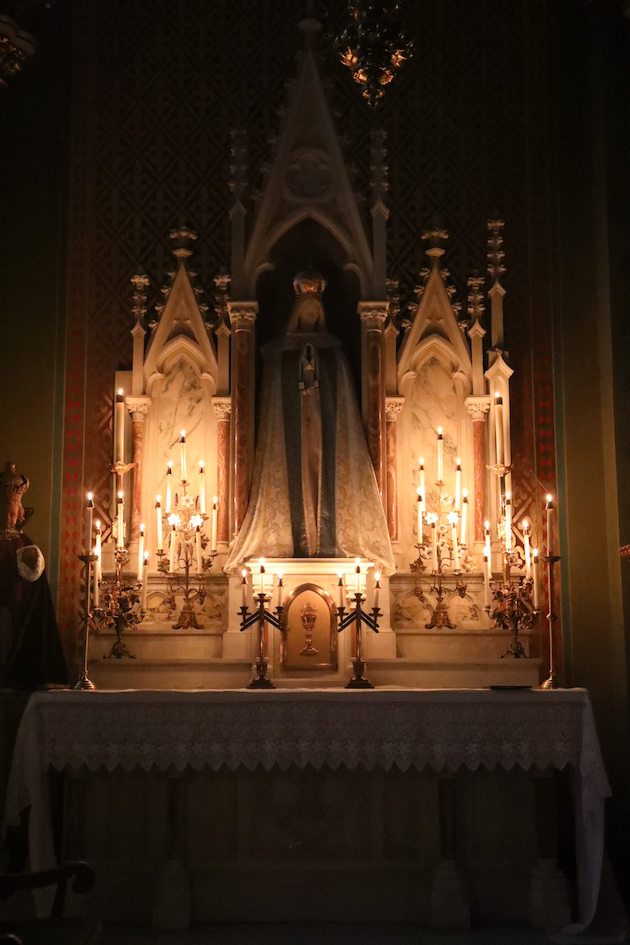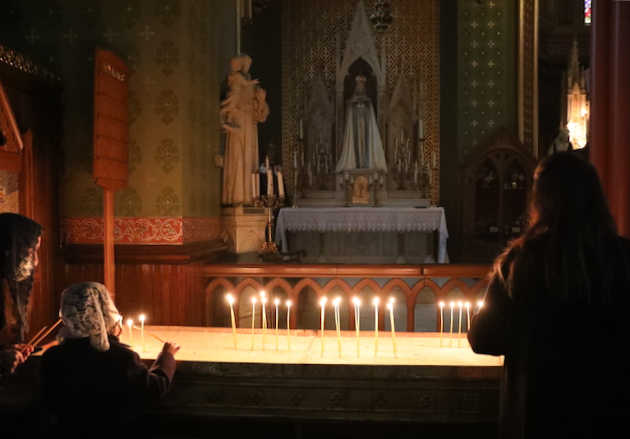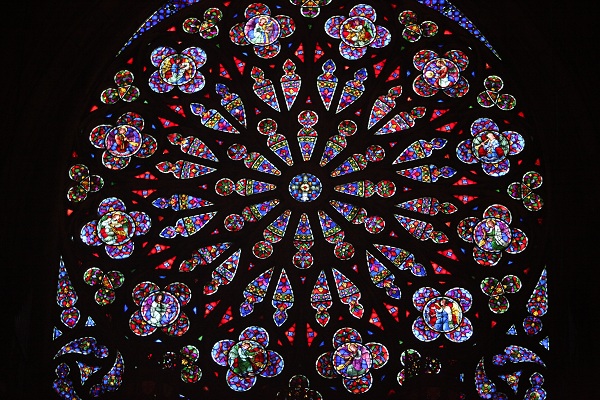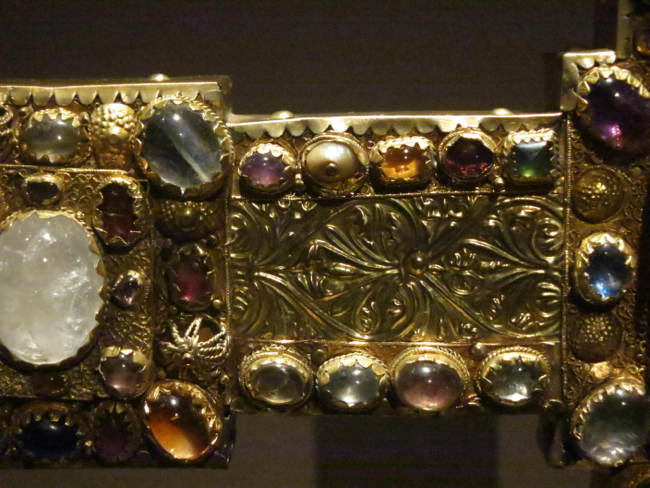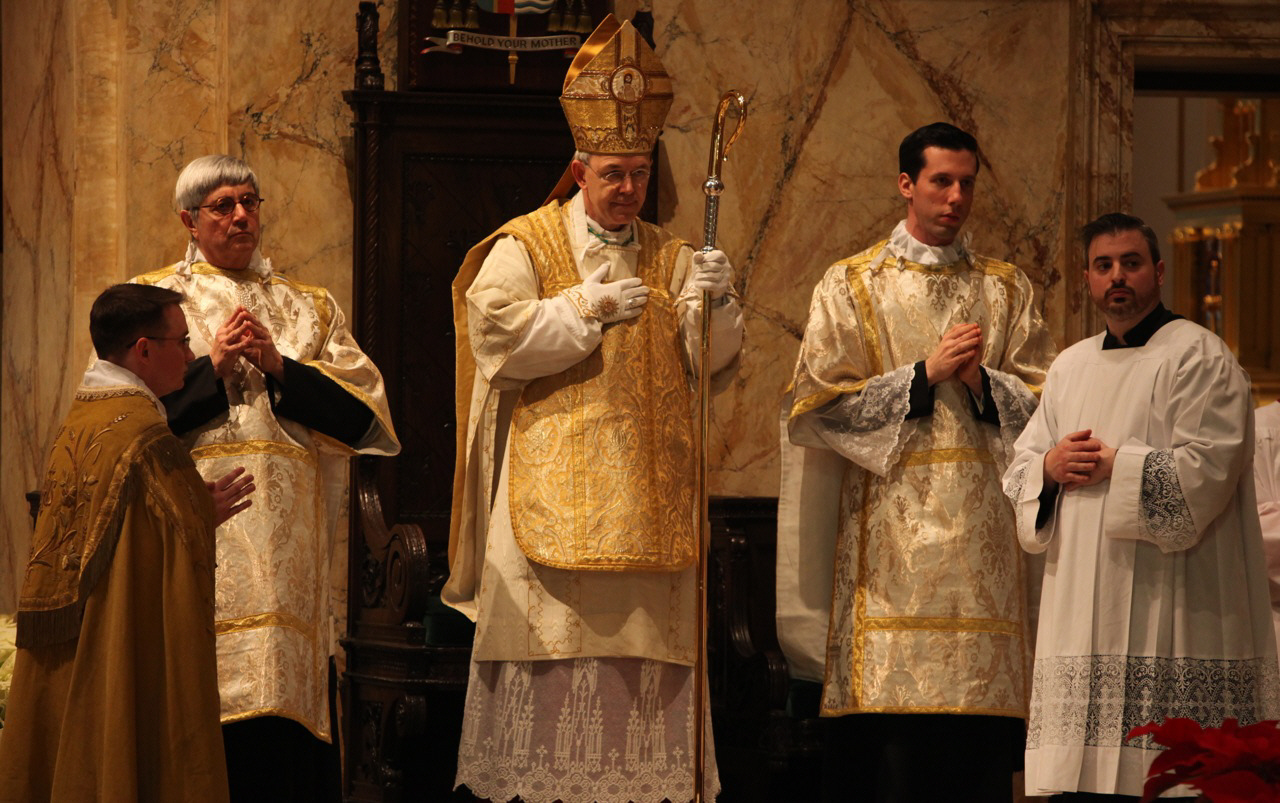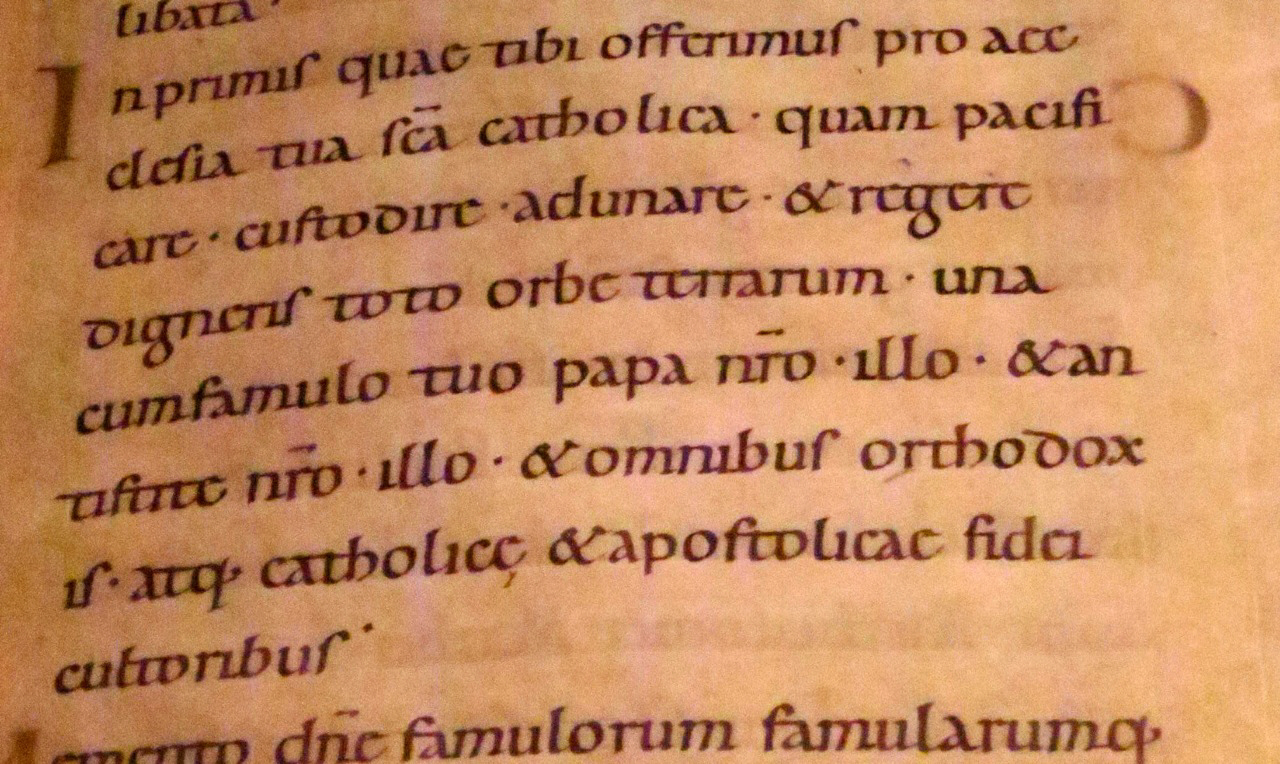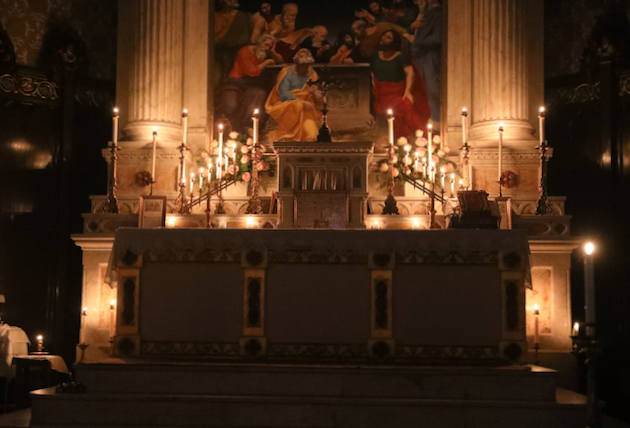
At 6 am, Father John Ringley offered a solemn Rorate Mass at St. Mary’s Norwalk, CT. Deacon Stephen Genovese served as deacon and Mr. John Pia was sub-deacon.

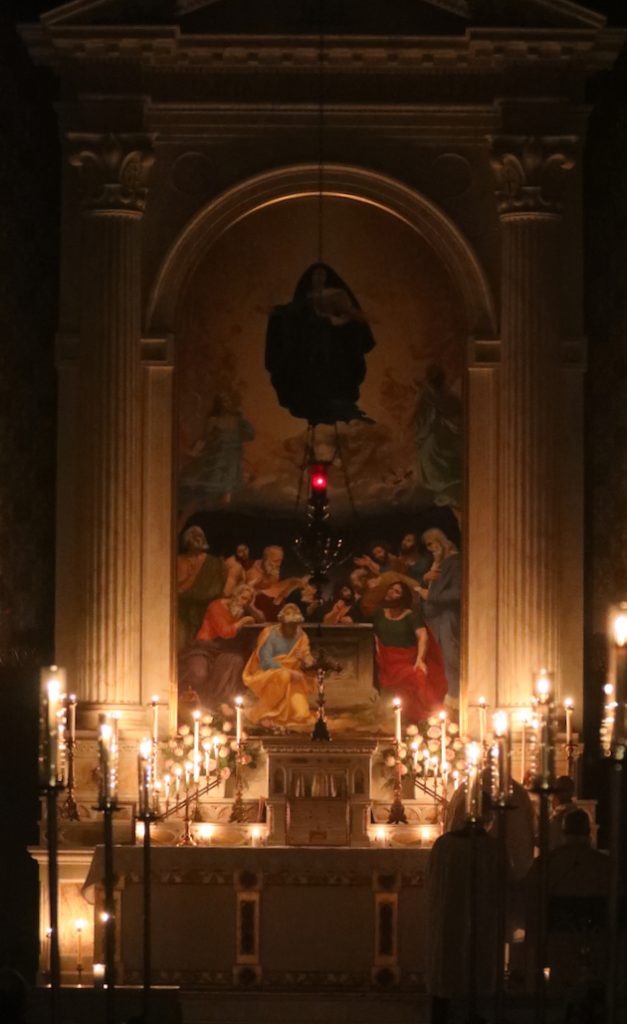
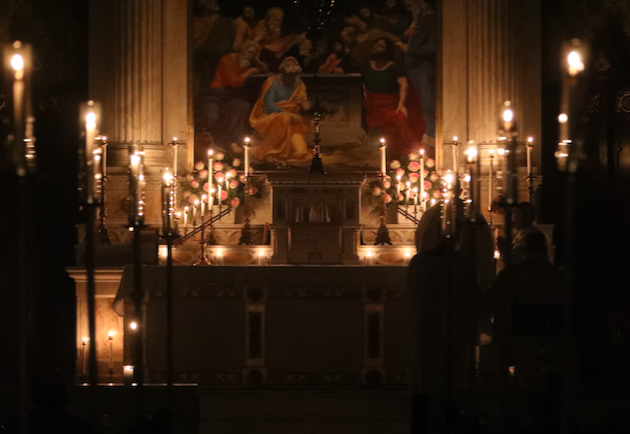


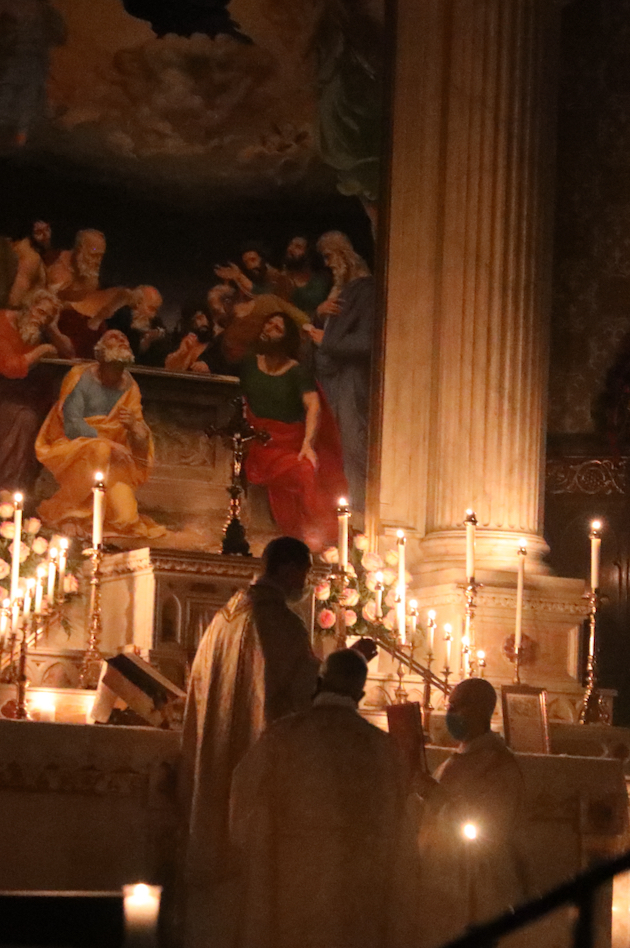
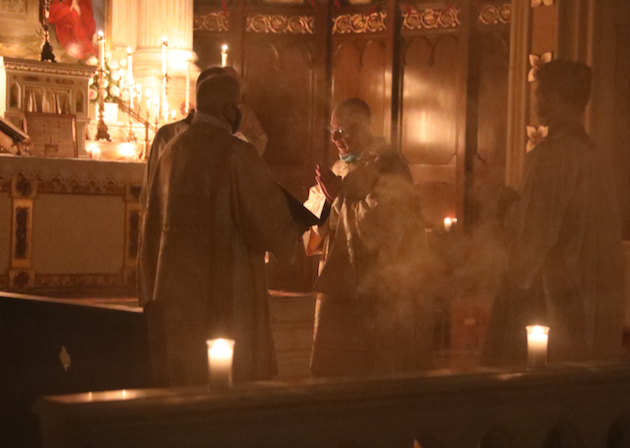



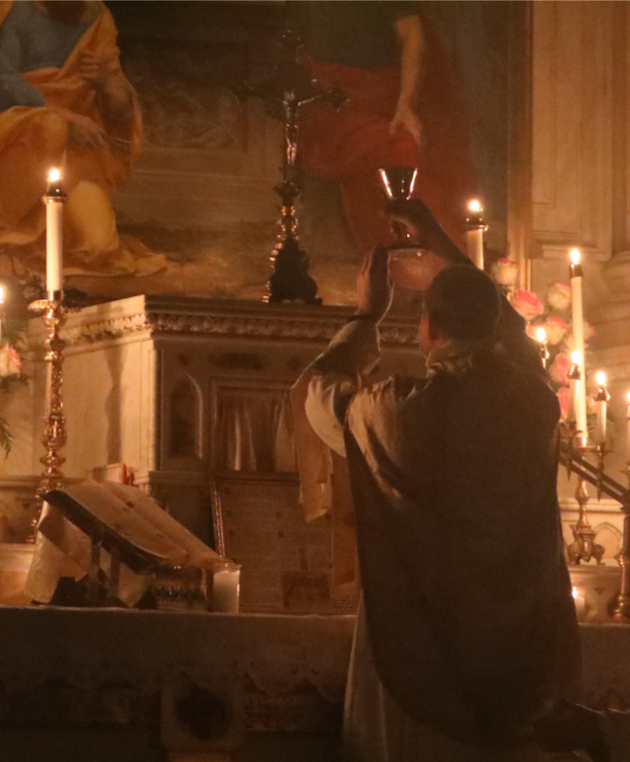

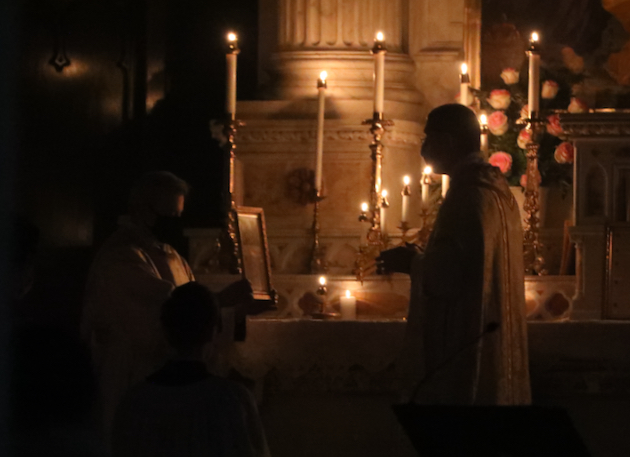
17
Dec
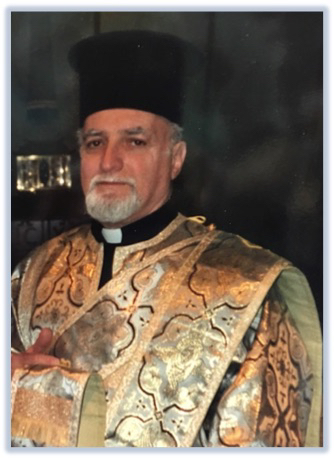
As this calamitous year approaches its end, we would like to recall briefly several of those who died in the last 12 months. Their lives illustrate the amazing possibilities of Traditional Christian life in the radically secular city that is New York. One of these people was Archdeacon John DeMeis.
One fine day in the early 1980’s, when I was attending NYU law school, I had wandered over to the northern reaches of Mulberry Street. In those years that neighborhood was semi-deserted even in the middle of the day and featured mainly garages and “social clubs.” I passed by an open door on the ground floor of a small building next to old St. Patrick’s church and peered in. Someone inside noticed me and invited me inside – it turned out to be a Byzantine church: St. Michaels’ Russian Catholic chapel! And the man extending the invitation was John DeMeis. From that day on, for many years, I regularly attended St. Michael’s. But for John’s welcome, I never would have thought of entering there. I owed to him my main experiences of the Eastern liturgy – at that time, in the pre-indult days, the only fully satisfactory alternative for those seeking Traditional Christian worship. Wasn’t John’s welcoming gesture a real, if modest, example of that “evangelizing” that is so endlessly discussed nowadays ?
John DeMeis, a retired transit cop, had deep connections with both the Eastern rite and one of the most obscure and unusual Catholic parishes of Manhattan. Our Lady of Grace chapel, a storefront church on Stanton Street, was the spiritual home in New York City of the Italo-Albanians. This people had migrated to southern Italy and Sicily in the 15th century, fleeing Turkish oppression. In their new home they preserved the Byzantine rite, celebrated in Greek, but stayed in communion with Rome. Quite a few of them after 1870 joined the mass emigration from Southern Italy to the New World.
Our Lady of Grace chapel was founded in 1906 by Fr. Ciro Pinnola, an Italo-Albanian priest from near Palermo (another source says the foundation was in 1904). He was married, a practice that was beeing repressed in in the other Catholic Byzantine communities in the U.S. In 1909, the chapel’s congregation numbered 400.
Regrettably, when Fr. Pinnola died in 1946, the parish ended as well. But John DeMeis and others labored to keep its memory alive. Even today, the Our Lady of Grace Italo-Greek Catholic Mission and Society preserves the memory of this community. John DeMeis was devoted to this society – he later became its archivist and historian. The society (“OLOGS”!) publishes a newsletter for the Italo-Albanian community several times a year and sponsors events as well.
After 1990 I moved out of New York and returned to St Michael’s only now and then, on special occasions. In fact, I don’t think I ever saw John DeMeis ever again in person after that year. Tragically, St. Michael’s Russian Catholic chapel, once a significant initiative of the Archdiocese of New York, was evicted in 2019 from the home they had occupied since 1936. The space is currently occupied by a souvenir shop. The community, however, has continued – for the last two years they have been hosted by the parish of St. Vincent Ferrer and St. Catherine of Siena(at St. Catherine’s).
I had the impression that John had moved on as well – deepening more and more his commitment to Eastern or Greek Catholicism. He was ordained deacon in 1990 and archdeacon in 1997. For many years he served as a chaplain to the police department.
John DeMeis died on August 19th of this year at the age of 90. He is survived by his beloved wife Rita and their children and grandchildren. May Archdeacon John’s memory be eternal!
(Photo courtesy of Kristina DeMeis)
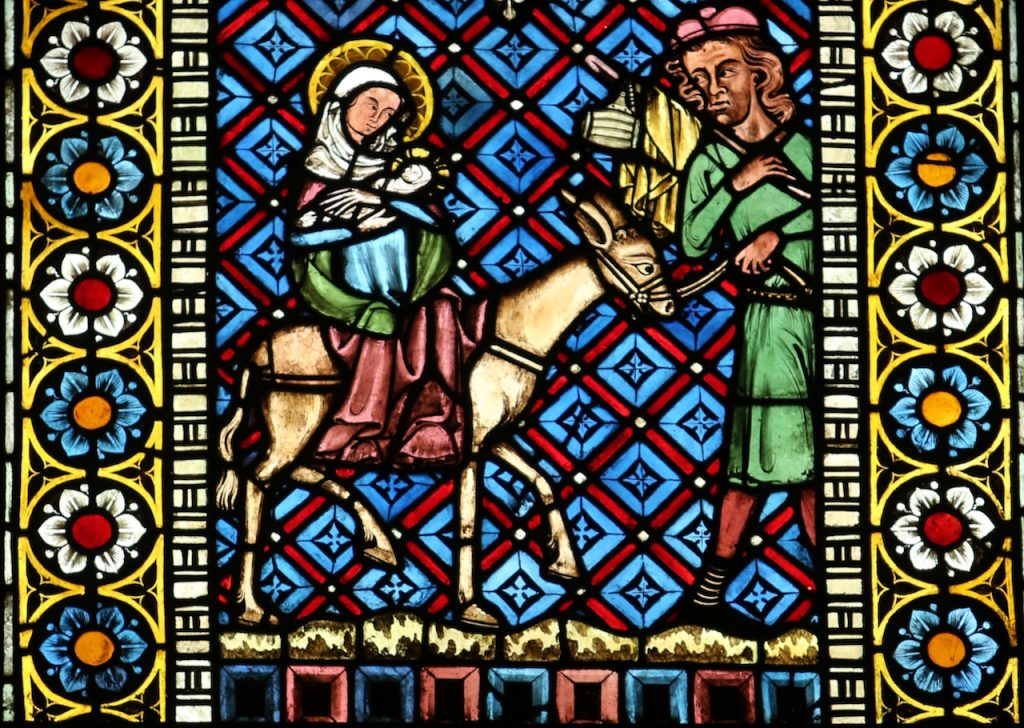
Dear Friends, We wish you a blessed Christmastide! We submit this listing of traditional Masses for Christmas.
Please bear in mind that for some of these churches you need to register ahead of time. So call the church first to check. We’re sorry that this is the case. One pastor told us not to post his schedule of Masses because the faithful need to pick up tickets ahead of time.
We can’t bear to think of people being turned away from Mass at Christmas (or any time). We will use the present circumstances to reflect on Mary and Joseph’s arrival in Bethlehem, only to find all of the inns full.
As always, we rely on our readers to contact us with information about traditional Masses in the area.
Christmas, December 25
Connecticut
St. Mary Church, Norwalk, CT, Christmas Eve: 11:30 pm Christmas Carols, 12:00 Solemn Midnight Mass; Christmas Day: 9:30 am Solemn Mass, 11:15, Missa Cantata. Please contact the church to register.
Sts. Cyril and Methodius Oratory, Bridgeport, CT, Midnight Mass, 8:30 am, 10:15 am. Please contact the church to register.
St. Patrick Church, Bridgeport, CT, Missa Cantata, 12:30 pm. Go to the Cathedral Parish to register.
St Joseph Church, Danbury, CT, Solemn Midnight Mass, Fr. Matthew Clark, celebrant, Christmas Carols at 11:30 pm; Christmas Day, 11:30 am. Please contact the church to register.
St Martha, Enfield,CT, Midnight, High Mass; Christmas Day 11:00 am Low Mass
St. Stanislaus Church, New Haven, CT, Missa Cantata, 2 pm.
New York
Holy Innocents Church, New York, NY, Sung Midnight Mass, preceded by exposition of the Blessed Sacrament at 10 pm ending with Benediction at 11:30 pm, procession to the manger and blessing of the crib at 11:45 pm; Low Mass at Dawn, 9 am; Sung Mass at 10:30 am.
Our Lady of Mount Carmel, New York, NY, Solemn Midnight Mass, Christmas Day, Missa Cantata 10:30 am.
St. Agnes Church, New York, NY, 9 am.
St. Vincent Ferrer, New York, NY, Midnight Sung Mass, Dominican Rite.
St. Josaphat Church, Bayside (Queens), NY, Midnight Mass, Christmas Day, 9:30 am.
St. Rocco Church, Glen Cove, NY (Long Island), Midnight; 11:30 am.
St. Matthew Church, Dix Hills, NY (Long Island), 12:30 pm
St. Rosalie, Hampton Bays, NY (Long Island), 12:45 pm.
St. Michael Church (SSPX), Farmingville, NY. (Long Island), Midnight, 9 am.
St. Paul the Apostle Church, Yonkers, Missa Cantata, 10 am, no need to register
Immaculate Conception, Sleepy Hollow, NY, 2 pm Missa Cantata. (only one Mass today)
St. Patrick Church, Newburgh, NY, 3 pm.
New Jersey
St. Paul the Apostle Church, Jersey City, Christmas Day, 2 pm Missa Cantata, Fr. John Perricone, celebrant; 1:45 Prelude of Sacred Music. (Please note that at this time, according to the pastor’s directive, Holy Communion will not be distributed in the traditional manner, on the tongue. The faithful are asked to make a spiritual communion.)
Our Lady of Victories, 150 Harriot Ave, Harrington Park, NJ, 9:00 pm – Latin Mass (web site does not indicate if Mass is low or sung)
St. Anthony of Padua Oratory, 1360 Pleasant Valley Way, W. Orange, 11:00 pm – First Mass of Christmas, Missa Cantata (no carols beforehand); Christmas Day, 9:00 am – Low Mass, 11:00 am – Low Mass
Octave of Christmas, January 1
Connecticut
St. Mary Church, Norwalk, CT, 9:30 am, Solemn Mass, 11:15 am, Missa Cantata
St. Stanislaus Church, New Haven, CT, Low Mass, 2 pm
St. Joseph Church, Danbury, CT, Missa Cantata, 11:30 am
Sacred Heart, Georgetown, NY, 6 pm Missa Cantata
New York
Holy Innocents Church, New York, NY, New Year’s Eve Dec. 31, 11:30 pm; Jan. 1, low Mass 9 am; Missa Cantata 10:30 am.
St. Agnes Church, New York, NY, 10:30 am
Immaculate Conception, Sleepy Hollow, NY, 2 pm Low Mass (only one Mass today)
New Jersey
St. Paul the Apostle, Jersey City, 2 pm.
Epiphany, January 6
St. Paul the Apostle, Jersey City, 7 pm
Just keep in mind.. . . you may have to register ahead of time.
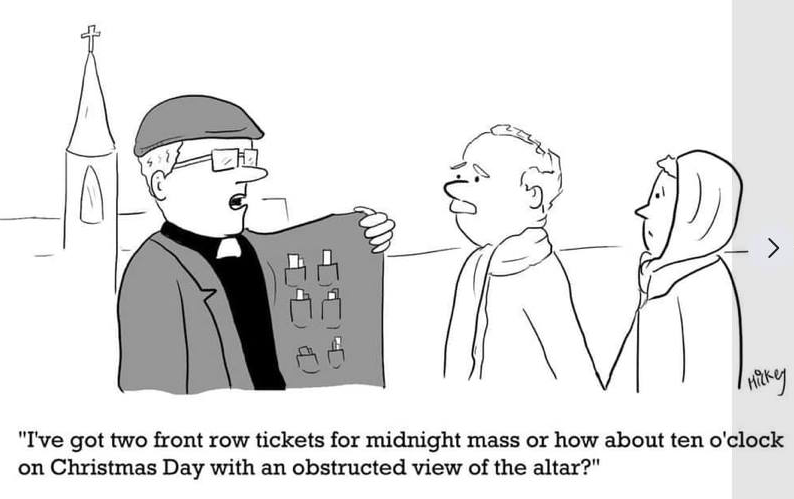
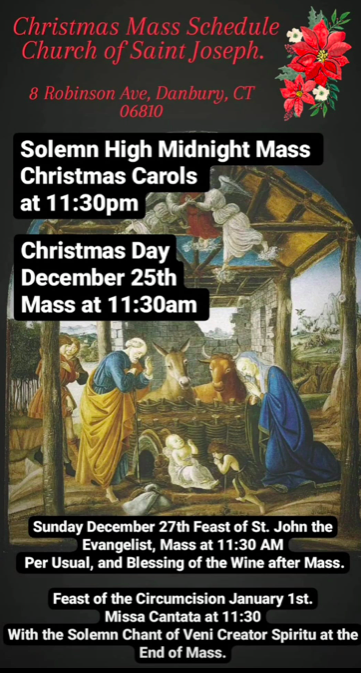
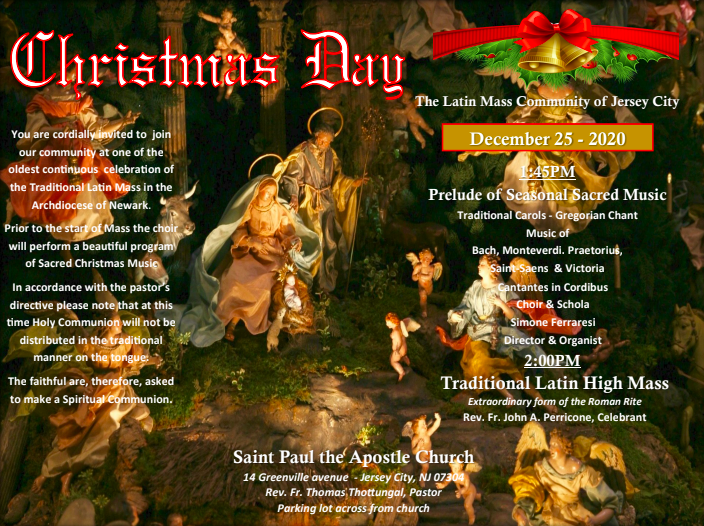
15
Dec
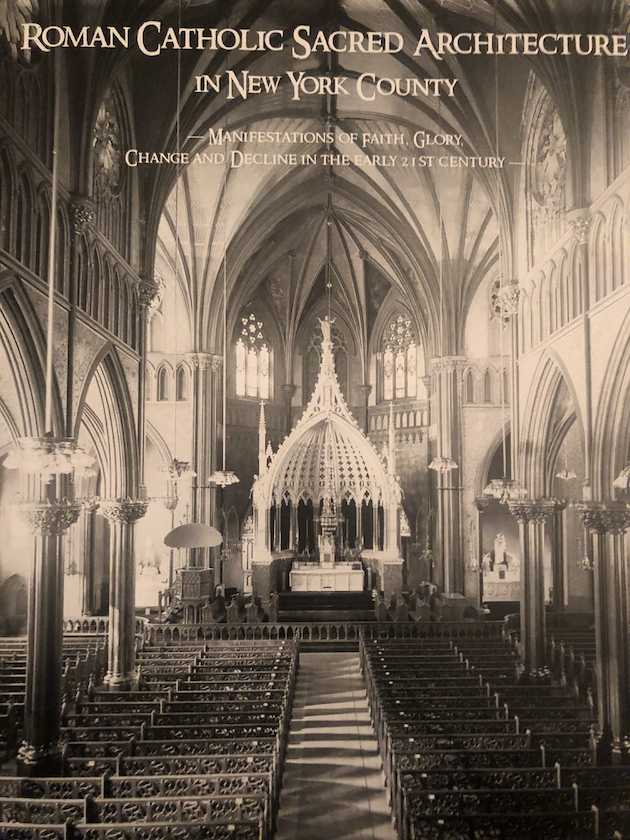
Roman Catholic Sacred Architecture in New York County: Manifestations of Faith, Glory, Change and Decline in the Early 21st Century
By Paul R. Peters
2020
As our readers probably know, we have long been following the history of the Catholic churches of New York City. Recently I was fortunate to receive and read the work of another researcher in the same area. Paul R. Peters has written and self-published Roman Catholic Sacred Architecture in New York County: Manifestations of Faith, Glory, Change and Decline in the Early 21st Century (2020). In it, he covers the great majority of the Catholic parish churches of Manhattan island. (Non-New Yorkers need to know that New York County is synonymous with Manhattan plus Marble Hill in the Bronx.)
Peter’s book is one of select few on this subject. Thomas J. Shelley’s Bicentennial History of the Archdiocese of New York of course also covers all the parishes of Manhattan. Then, there is Rene S. James’ The Roman Catholic Churches of Manhattan (2007, also self-published). Finally, the grandfather of all such studies – and still the best – is John Gilmary Shea’s 1878 book on New York City Catholic churches. In Sacred Architecture Peters gives us several photographs and a brief description of each of the churches in New York. Many of the photographs are his own, taken from 2003 onwards, but he has supplemented these with well-chosen examples from local archives or from other sources. See, for example, this book’s beautiful cover photograph of the interior of the now-closed All Saints parish in Harlem, taken when that church was relatively new. Another example is the striking image of the interior of Old St. Patrick’s Cathedral.
Our author has put together this book with a specific purpose in mind. Peters documents through photographs the status, before and after the Council, of each of these churches. This focuses, in particular, on the chancel or sanctuary of each church and a melancholy review of the damage that was done after the Council. In most cases this involved moving the altar forward, eliminating or reducing the communion rail, and placing a new altar at the center of the church on a platform projecting into the nave (what Peters calls a “build-out.”) It also usually was accompanied by the gross simplification or outright destruction of the former decorative program of the church which so often had featured gothic altars, stencils, paintings and statuary. Peters is rightfully indignant at this desecration, carried out supposedly to “break down barriers” between the celebration of the Mass and the people. They of course largely departed, which is why parish after parish after parish is closing. This book is a visual chronicle of the devastation.
Those churches were indeed fortunate where the post-Conciliar updating was limited to placing a table between the grand high altar and the communion rail, leaving all else intact. New York, however, has the good luck to have more than handful of these, in which the Conciliar wave of destruction of art was halted by the parish’s poverty or the resistance of the donors’ families.
Peters’ book obviously has great appeal for the connoisseur of New York churches. He has here pictures of the interiors of churches with which I was familiar but never got around to photographing before their destruction – such as St. Ann’s or the Sacred Hearts of Jesus and Mary. I should especially emphasize his discussion of the once glorious Church of Saint Thomas in Harlem – an equally colorful and wildly decorated counterpart to Our Lady of Good Counsel. It was shut down and destroyed by Cardinal Egan. Our author also has located intriguing photographs of the original 19th century churches of the parishes like St. Andrew and Immaculate Conception which later acquired grand new buildings.
To describe some 100 churches and their constantly changing appearance is a formidable task – I appreciate the magnitude of the effort and don’t want to seem critical. For a second edition, however, I would suggest more systematically providing, where possible, dates for the photographs and for the narrative. For as the author himself tells us, it is not so simple as “before the Council” and “after the Council.” In some parishes, ( e.g. St. Stephen’s, St. Agnes) major changes – and in some cases major damage – was done prior to the Council. In other cases, post-Conciliar ravages have been partially repaired (Our Lady of Pompeii, Our Lady of Sorrows).
Despite the vast terrain Peters covers, I have only been able to identify a very few instances where he is outright wrong – such as his description of the combination of the parishes of St. Emeric and St. Bridget (Brigid). But even there we are grateful to him for pointing out the dedication (in fact at St. Emeric, not St. Brigid) of a chapel to Cardinal Egan (while he was still alive)! This book’s list of churches may be comprehensive but it is not exhaustive – one prominent church missing is the shrine of St. Frances Cabrini in Washington Heights. I would also dissent from the author’s aesthetic judgment in certain cases (like the renovation of St. Francis Xavier church).
All in all this is a great book for enthusiasts of ecclesiastical architecture or New York City history. And also a sobering work for those Traditionalists who want to experience the bitter feeling of seeing the details of so much that has been senselessly destroyed. Highly recommended!
15
Dec
Sacred Heart R.C. Church (Clifton, NJ) will be offering a Rorate Mass (Extraordinary Form) at 6:00a.m. on Saturday, December 19, 2020. This is the first time the Advent Devotion will be celebrated at the Parish. The Church is located at 145 Randolph Avenue, Clifton, NJ 07011. Ample parking may be found behind the school building next door. Pray to Jesus through Mary!
14
Dec
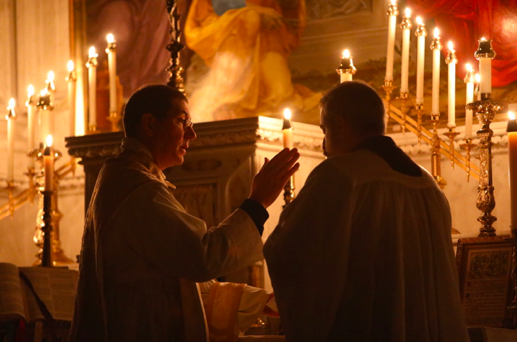
St. Mary Church in Norwalk, CT will have a Rorate Mass on Saturday, Dec. 19 at 6 am.
To attend, you must register ahead of time by calling the rectory: (203) 866-5546.
And in Danbury, CT:
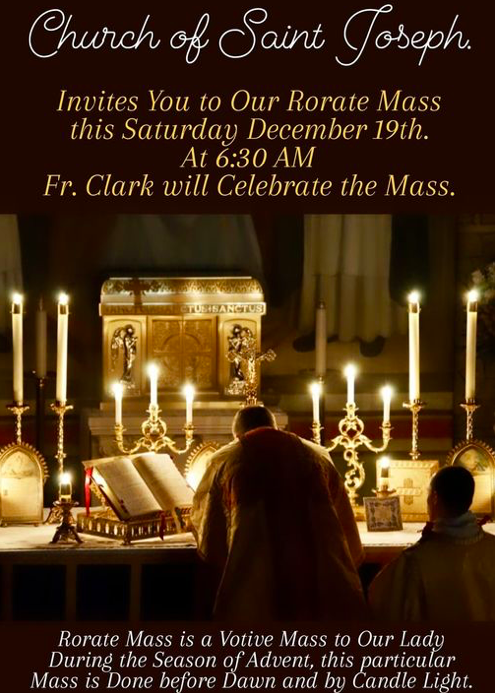
13
Dec
I feel that I owe you a status report on the Society of St Hugh of Cluny. What have we been doing over the last nine months? As you have probably realized, our Society had been in semi-hibernation since February. The coronavirus panic has shut down the events in which the St. Hugh of Cluny Society specializes: splendid liturgies and lectures by great speakers – often traveling to the New York area from outside the United States. The Covid-19 crisis has stopped all this. For example, a presentation on the new phenomenon of Catholic “integralism,” which we had scheduled for October, had to be cancelled. The same was true for our annual Mass at the San Gennaro festival in Little Italy. (The festival, of course, had been cancelled as well!) Thus we have been reduced to the role of commentators on developments in the Church – locally and in the world.
The picture we see is a sorrowful one.
The Covid-19 wave of hysteria, stoked by the media, has shut down or drastically restricted access to the Mass and the other sacraments. Until the very recent past, the pope and the hierarchy have abjectly yielded the secular powers in all their demands. We have no idea how much of the Catholic church will in fact reopen after the current restrictions are lifted. We do not know to what extent the finances of the church have suffered irreparable damage.
Next, this summer a wave of street violence on a level unseen for decades, again instigated by the media and condoned by local governments, swept the United States and even Europe. Statues of Catholic saints and heroes were toppled as prominent targets of a semi-official campaign to eradicate an anathematized “Western civilization.” For, as Catholic apologists of the past were so eager to point out, the very concept of the West (or “Europe”) is inseparable from the Church. Again, the clergy largely abdicated their role.
Within the Church, a self-proclaimed Catholic, on track to become the next President of the United States, advocates virtually unrestricted abortion privileges, rejecting the pro-life witness of so many over the years. The bishop of Rome and most of the hierarchy seem comfortable with his position. The decades-long agitation for the “seamless garment” sham has brought forth its inevitable result: the abandonment of Christian principled opposition to abortion.
In Rome, the Pope makes ever more radical utterances in every conceivable forum and functions more and more as an establishment political figure. At the same time, he seems to be trying to damp down a furious schismatic/ heretical wildfire in Germany-which he himself had unleashed. The Vatican’s restrictive rulings on this front (and on a few others) have, up till now, been largely ignored, while in contrast the pope’s radical declarations (for example, on homosexuality) are eagerly endorsed by the media. Meanwhile, by any objective criteria, the Church is in structural and demographic collapse, rocked by a never-ending series of scandals. Pope Francis very recently tried to extricate himself from one of the latter (the McCarrick affair) primarily by indicting Pope John Paul II (whom, after all, he himself had canonized).
Indeed, an overarching theme of the entire year is the complete irrelevance of the Catholic Faith to the controlling powers in Western society and even the majority of the population. The Church truly is “nonessential”- as is frankly acknowledged by most of the Church’s leadership. In fact, the Catholic religion, as such, started attracting major media attention again only when the Democratic candidate for the presidency started wearing rosaries and appearing “devout” as a transparent political tactic. This seems to be the foreseeable end of “ mainstream” Catholicism: inoffensive folklore combined with blind obedience to a conformist Church leadership entirely immersed in secular affairs – both amid the unstoppable decline and fall of the institutional Church.
Yet despite all the disappointments, ominous trends, and tragedies in Church and state, locally and world-wide, Traditionalist Catholics have so much to be grateful for as this year ends. Just in our Society’s restricted field of operations Catholic Traditionalism is flourishing as never before. A glance at the schedule of Traditional Masses for any recent holyday, as reported on our website, is the best evidence of that. Every fresh outrage of the Vatican or the American hierarchy generates a new wave of converts to the old rite. For more and more people realize the truth of what has always been the Traditionalist understanding: that liturgy, morality and theology form an inseparable whole. Consequently, Catholic Traditionalism, which can never be reduced to some kind of “Anglo-Catholic” or “ ritualist” liturgical sect, grows in attraction as the only real alternative to a disintegrating establishment. For example, in the current crisis, most (regrettably, not all) Traditionalist parishes have put first the spiritual needs of the faithful over compliance with ever-changing rules and restrictions of dioceses and governments. In so doing they demonstrate once again that it is the Traditionalists, not the establishment conformists, who are the truly “pastoral” churchmen!
We are so grateful to our loyal contributors who have continued to support us even though our main mission may have been temporarily suspended. In the meantime, we have of course continued our website. In view of a campaign currently being waged by a well-known traditionalist site against certain online celebrities, I feel obliged to state that the Society of St. Hugh of Cluny itself only pays for the comparatively minor costs of hosting and maintaining the site and nothing further. The overwhelming bulk of our expenditures relates to the financing of the events we sponsor.
Speaking of our online presence, I am always surprised and gratified by our site’s popularity with the friends of Catholic Tradition – and also with our enemies. Indeed, the latter are extraordinarily diligent readers, delving months into the past for the evidence that they seek. (St. Hugh of Cluny is not unique in this regard; Rorate Caeli also serves as a gold mine for these prospectors). As always, “Conservative Catholic” clergy are particularly prominent in such activity. Both friends and enemies will be happy to hear that we intend to ramp up our online activity.
We are confident that over the course of the next year the Society of St. Hugh of Cluny will be able to resume its usual activities with even greater success.
I wish all of our members and readers a blessed and holy Advent and a Merry Christmas!
^
13
Dec
12
Dec
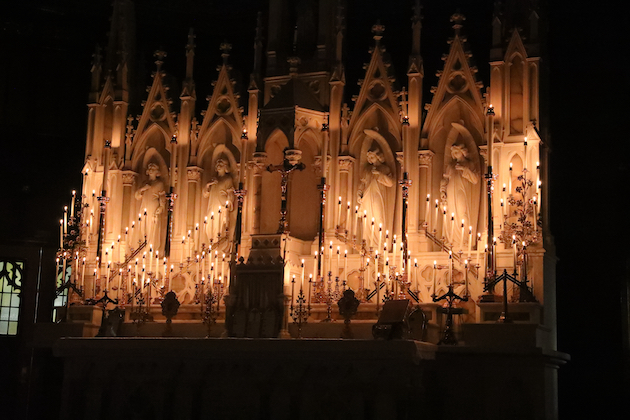
This morning, Father Cyprian LaPastina celebrated a Solemn Rorate Mass at the Basilica of St. John the Evangelist in Stamford.

